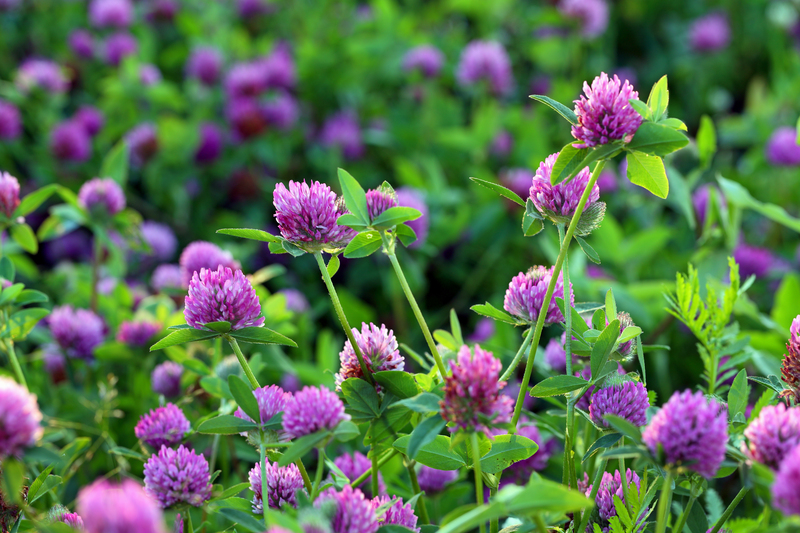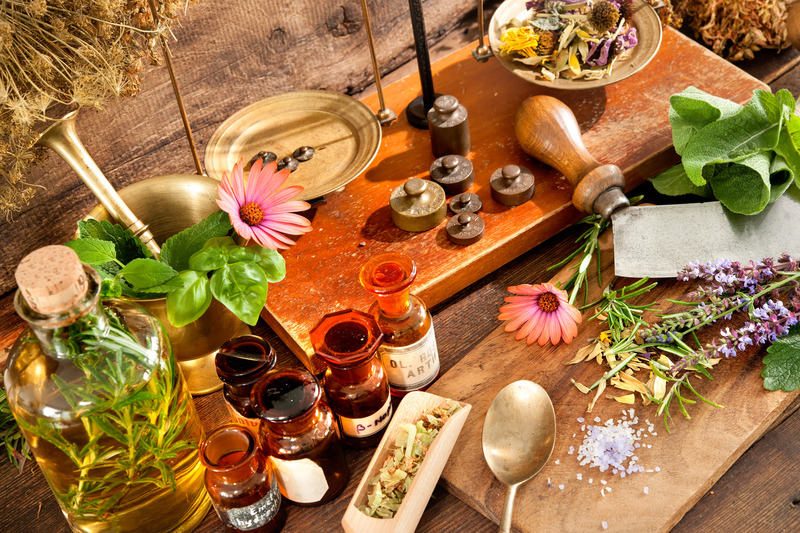Transforming Your Garden into a Dog-Safe Haven
Posted on 30/08/2025
Transforming Your Garden into a Dog-Safe Haven
A beautiful garden is the pride of any homeowner, but if you're a dog owner, ensuring that your outdoor space is both aesthetically pleasing and safe for your furry friend requires thoughtful planning. Creating a dog-safe garden benefits not just your pet's health and well-being, but also preserves the harmony between your beloved canine and your precious backyard. Discover how to transform your garden into a dog-friendly safe haven with our comprehensive guide.

Why Prioritize a Dog-Safe Garden?
Dogs are naturally curious creatures who love to sniff, dig, chew, and explore their environment. Unfortunately, many common garden items and plants can pose risks to their safety. Establishing a secure outdoor area allows your dog to enjoy the outdoors while giving you peace of mind. Here's why investing in a canine-friendly garden is essential:
- Prevents Accidental Poisonings: Many plants and garden products are toxic to dogs.
- Reduces Injuries: Proper landscaping prevents scrapes, sprains, and other injuries.
- Supports Healthy Behavior: Dedicated dog zones can minimize digging and destructive habit development.
- Enhances Mental and Physical Health: Secure outdoor play means more exercise and mental stimulation for your pet.
The Step-by-Step Guide to a Dog-Safe Garden
1. Choosing Dog-Safe Plants and Flowers
Selecting the right plants for a dog-safe garden is vital. Many common garden favorites, like azaleas, oleander, and daffodils, are highly toxic to canines. Instead, opt for dog-friendly plants that bring life to your garden without the risks. Some safe (and attractive) options include:
- Sunflowers (Helianthus annuus)
- Snapdragons (Antirrhinum)
- Roses (Rosa species)
- Marigolds (Tagetes)
- Bamboo
Always research any new plant before adding it to your dog-friendly garden. Remove dangerous flora and consider using raised beds or sturdy fencing to keep curious noses away from off-limit zones.
2. Avoiding Toxic Substances
Besides plants, there are other hazards in the garden that could jeopardize your dog's health:
- Chemical Fertilizers and Pesticides: Switch to organic or pet-safe alternatives whenever possible.
- Cocoa Mulch: Contains theobromine--extremely toxic to dogs. Use wood chips or straw instead.
- Sharp Tools and Equipment: Store all tools safely out of reach.
- Garden Additives: Avoid products containing metaldehyde or snail/slug pellets, as these are poisonous to pets.
Pet-proofing your garden includes a commitment to safe gardening practices and careful product selection.
3. Secure Fencing and Boundaries
A dog-safe yard is one that keeps your furry friend securely inside. Here's how to reinforce your garden boundaries:
- Consider solid fencing at least 1.8 meters (6 feet) high to deter jumps and escapes.
- Bury fencing at least 30cm (12 inches) into the ground if you have a digger.
- Check for and seal all gaps, loose boards, or holes under and around the fence periodically.
Evaluate gates to ensure they close securely and can't be nudged open. If you wish to keep your dog out of certain areas, a dog-proof garden layout with internal barriers is highly effective.
4. Designing With Your Dog in Mind
Before putting shovel to soil, think from your dog's perspective! Dog-friendly garden designs take into account:
- Paths: Dogs love to patrol! Create curved pathways with paw-friendly materials like bark or smooth gravel.
- Shaded Rest Areas: Provide cool retreats using trees, shrubs, or purpose-built dog shelters.
- Open Spaces: Leave plenty of room for running, playing, and retrieving.
- Natural Toileting Zones: Set up a designated spot with sand or pea gravel for your dog to use as a bathroom.
Varied landscaping also appeals to your dog's senses, helping prevent boredom and behavioral issues. A tailored garden not only enriches your dog's daily life but can enhance your own enjoyment of your outdoor space.
5. Providing Water Features
Many dogs enjoy splashing or drinking from outdoor water sources. However, not all water features are safe! If you wish to incorporate a dog-safe pond or fountain:
- Ensure gentle slopes for easy self-exit should your dog fall in.
- Choose shallow designs to prevent accidental drowning.
- Use only non-toxic materials, and avoid chemical treatments in the water.
- Consider a dog-specific splash zone like a shallow kiddie pool for play and cooling off.
Always supervise your pet around garden water features and clean them regularly.
6. Engage and Entertain: Enrichment for Dogs
Mental and physical stimulation is key to a happy, healthy dog. A dog-friendly backyard should be filled with opportunities for play and exploration:
- Agility equipment like tunnels, ramps, and hurdles for training and fun.
- Interactive toys and puzzle feeders, secured or attached to posts.
- Stimulation zones with digging pits or sandboxes. Bury toys or treats to encourage natural instincts!
Enriched environments reduce anxiety and the likelihood of unwanted behaviors.
7. Addressing Common Garden Hazards
Even with the best planning, hidden dangers can lurk in every yard. Proactively check your dog-safe garden for:
- Spiny or thorny plants: Avoid planting or prune back roses, cacti, and holly
- Compost piles: Keep bins secured, as moldy scraps can be toxic if ingested
- Sharp gravel or hardscape materials: Choose smooth, paw-friendly alternatives
- Escaping hazards: Monitor for any fallen fence panels or storm damage
- Garden decor: Secure wind chimes, lanterns, and statues that may tip and harm pets
8. Allergen Awareness and Flea Control
Your dog may be sensitive to pollen, dust, or insects living in your garden. Reduce allergy risks by:
- Planting low-pollen or hypoallergenic varieties
- Keeping grass short to reduce flea habitat
- Using natural pest deterrents like diatomaceous earth instead of chemical sprays
Regular grooming and flea checks complement a safe outdoor environment.
9. Creating Safe Zones for Puppies and Smaller Dogs
Puppies and small dog breeds are particularly vulnerable in the garden. Make sure to:
- Use closely spaced fencing to prevent escape
- Eliminate choking hazards like small stones or garden labels
- Provide extra shade, as tiny pups can overheat quickly
10. Seasonal Considerations for a Pet-Proof Garden
Adjust your dog-friendly garden routines with the seasons:
- Spring: Beware of spring bulbs sprouting (like tulips and lilies, both toxic).
- Summer: Ensure fresh water is always available and add extra shade structures.
- Fall: Rake leaves regularly to prevent mold, which can be harmful.
- Winter: Keep pathways clear of ice, and ensure antifreeze products are stored away (antifreeze is deadly to pets).
Tips for Maintaining a Dog-Safe Haven
Routine Inspections
Walk around your garden weekly. Check fences, gates, kennels, play equipment, and plant health. Quick fixes prevent many mishaps!
Educating Family and Visitors
Make everyone aware of pet-safe practices, from keeping gates closed to understanding your dog's preferences and no-go zones. When hosting visitors, especially children, remind them of the garden's dog policies.
Training Your Dog for Safe Outdoor Enjoyment
A well-trained dog is less likely to get into trouble. Reinforce commands like "leave it," "stay," and "come." Over time, your dog will understand which parts of the garden are for play and which are off-limits.
Integrating Dog-Safe Features into Existing Designs
You don't have to start from scratch! Retrofit your backyard by:
- Adding pet gates or low fencing around hazards
- Swapping toxic plants for safe alternatives
- Swapping rock mulch or thorny bushes with paw-safe ground covers

Frequently Asked Questions About Dog-Safe Gardens
What are the top toxic plants for dogs to avoid?
- Azaleas
- Oleander
- Daffodils
- Lilies
- Sago Palm
- Foxglove
- Yew
Replace any of these with pet-friendly alternatives from our safe plant list!
How can I deter my dog from digging up flower beds?
Provide a dedicated digging area with sand or loose soil. Reward your pup for using this spot and deter digging elsewhere by covering beds with mesh netting or incorporating boundary plants.
What should I do if my dog eats a suspicious plant?
Call your veterinarian immediately. If possible, identify and save a portion of the plant for the vet. Rapid intervention can be lifesaving.
Conclusion: Crafting A Safe and Enjoyable Garden Retreat for Your Dog
Transforming your outdoor space into a dog-safe haven doesn't mean sacrificing beauty or function. By selecting pet-friendly plants, eliminating hazards, and embracing clever garden design, you'll not only protect your canine companion but enrich their daily life. Invest in your backyard today--your dog will thank you with years of joyful play, relaxation, and companionship.
For even more advice on dog-friendly garden transformations, consult with local horticulturists or canine behaviorists. By taking these thoughtful steps, your garden can truly become a sanctuary for both you and your best friend.

